
The design of open plan offices has become a subject of intense scrutiny in recent years. At EIAS, in a presentation by Juan Negreira the practical implications of ISO 22955 for open plan office design were discussed, shedding light on the important considerations and best practices.
The role of acoustics in offices
At the outset of his presentation, Juan Negreira outlined the role of office acoustics. According to the studies noisy environments and a lack of privacy is usually a top complaint in offices. What could be important for employers, is the positive correlation between noise in offices and the number of sick leave days. A proper acoustic treatment can reduce the comfort distance (the distance from speaker where the A-weighted sound pressure level of speech falls below 45 dB) by 35%. Good room acoustics can decrease general annoyance by 16% and cognitive stress by 11%.
Understanding origins of ISO 22955:2021
Studies show that reverberation time is not a proper descriptor of open plan office’s acoustic quality. On the other hand, speech decay and level of speech alone don’t explain perceived disturbance by noise in offices. To understand and design acoustic environments of open plan offices, a more complex approach is needed which takes into account people and activities in a room. That is why ISO 22955 introduce 6 types of open plan offices:
- Vacant floor – activity still unknown
- Tele- and video communication – mainly focusing on external communication
- Main collaborative work – often verbal communication with nearby colleagues
- Small amount of collaborative work – sporadic verbal communication with nearby colleagues
- Welcoming areas – receiving the public
- Mixed spaces – combining two or more activities in the same space
Juan outlined that ISO 22955 is not a tool only for acousticians. It is a tool for architects, interior designers, workplace strategists and buildings owners, helping them to make proper decisions concerning layouts and acoustic specifications.
ISO 22955:2021 acoustic parameters
Along with well-known parameters as RT, A/S floor, D2,S; Lp,A,S,4m, ISO 22955 for open-plan offices introduces new parameter, as well.
DA,S , in situ acoustic attenuation of speech, is a difference, in decibels, between an A-weighted speech source spectrum at 1 m from an omni-directional source in the free field and the A-weighted sound pressure level at a reception point. Proposed values vary, depending on the activity or the combination of activities.
For open plan offices with mixed spaces, the rule of thumb is “the greater the difference in activity and sensitivity to noise, the greater the attenuation that is appropriate between activities”.
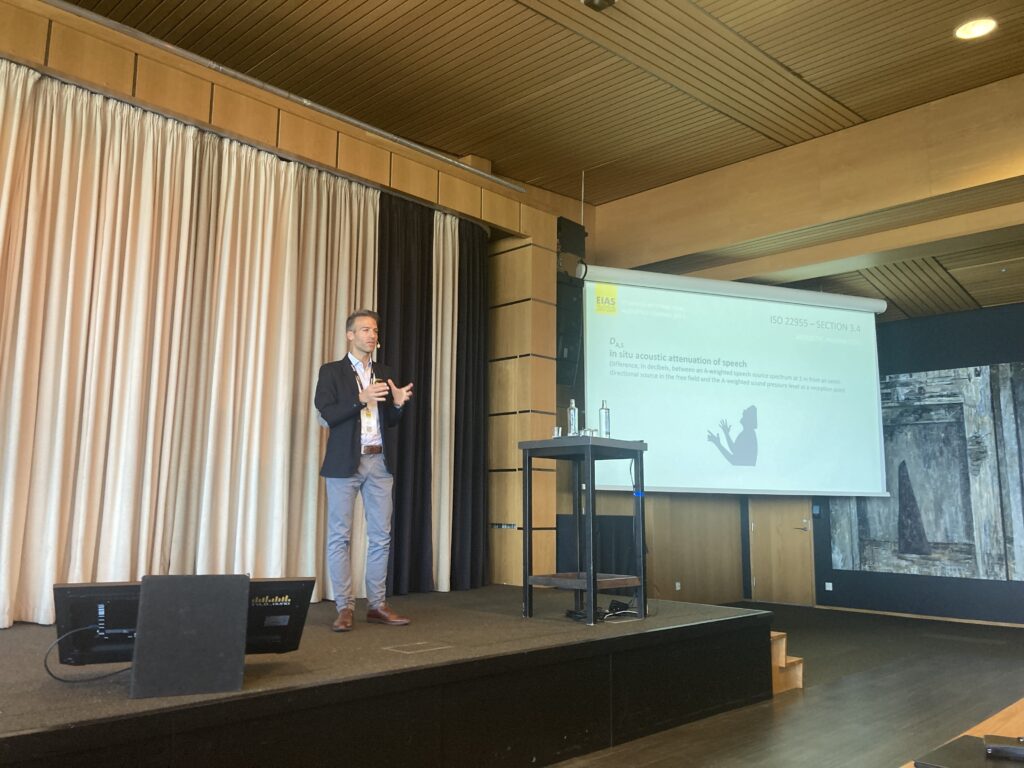
In-situ acoustic attenuation of speech in practice
Juan presented simulations of DA,S in open plan office in several different scenarios: without acoustic treatment, with acoustic screens alone, with Class A wall to wall ceiling (Ecophon Focus A) alone and with absorbent screens. He showed also in situ acoustic speech attenuation values in open plan office in connection with percentage of the soffit being covered with free hanging units (Solo Rectangle, 70% or 50% coverage) and with baffles (Solo Baffle). DA,S was simulated for 6 different receiving points.
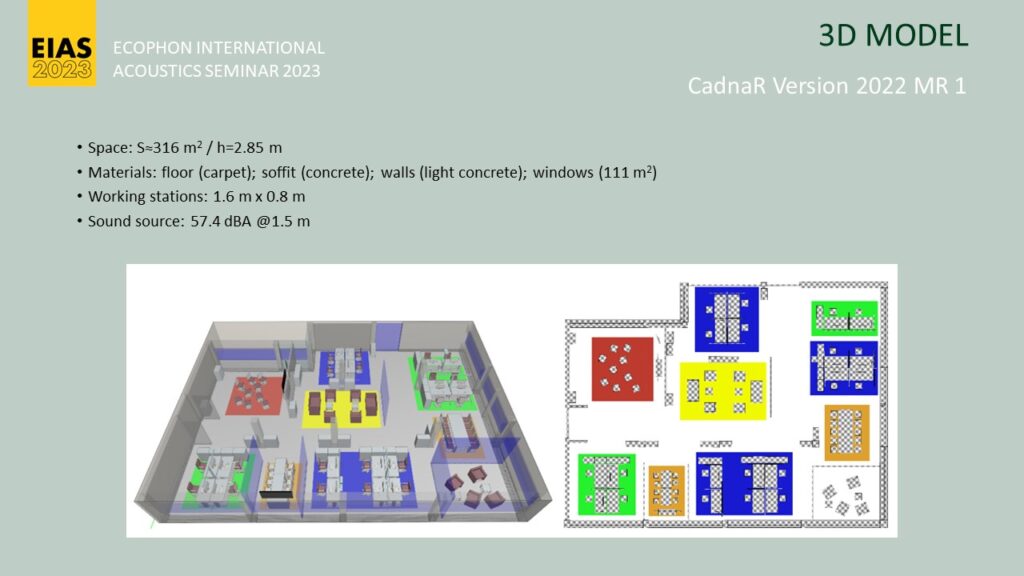
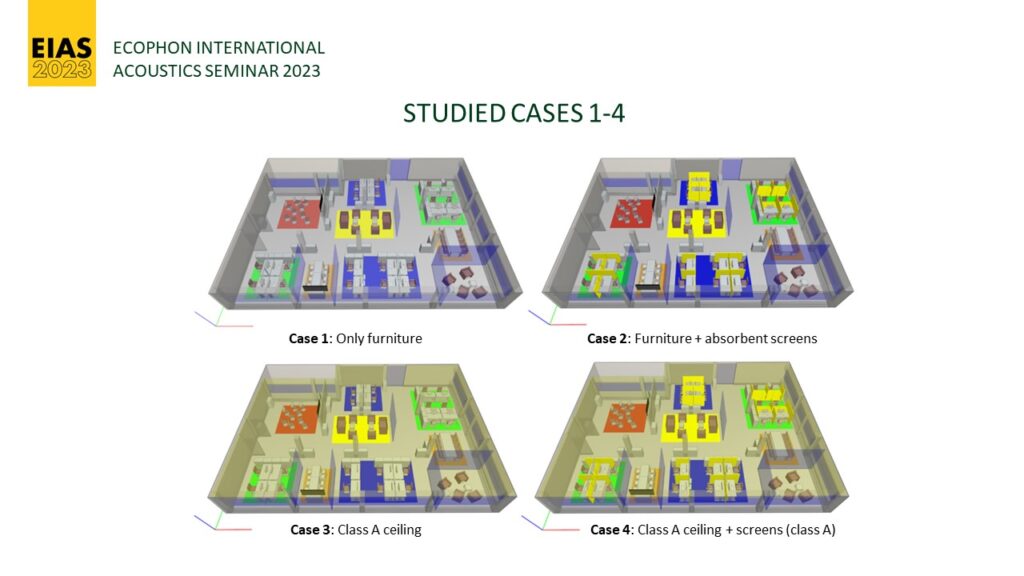
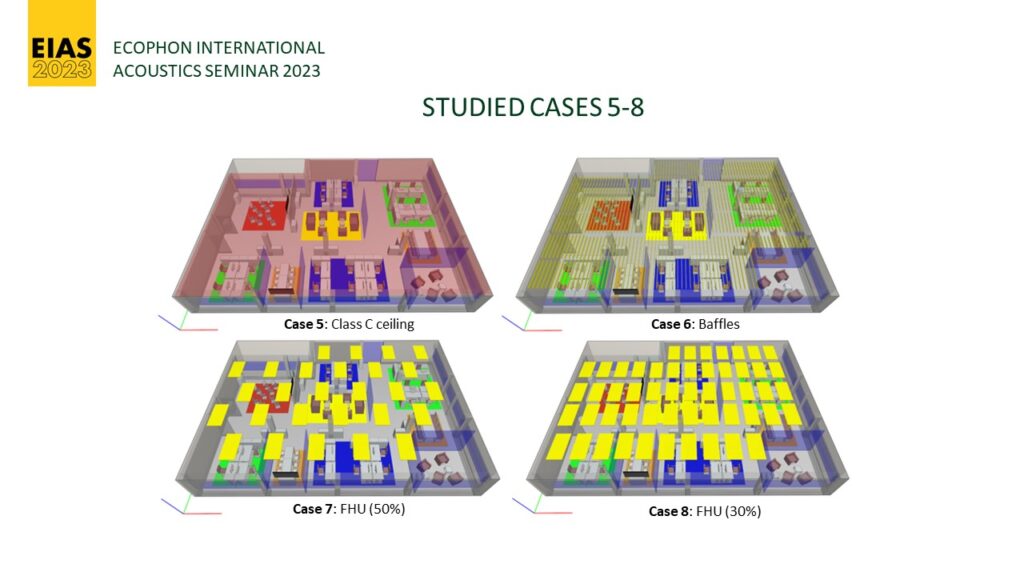
Results
In all tested scenarios, Class A wall-to-wall ceilings with screens or Class A wall-to-wall ceilings alone gave the best results. The acoustic speech attenuation ranged from 10.5 dB to 15.8 dB, depending on the case. Acoustic treatment with baffles and free-hanging units covering 50% of the soffit yielded similar or slightly lower values. 30% soffit coverage using free-hanging units gave lower values of DA,S (8.2 dB). All acoustic treatments made a significant difference compared to the scenario with furniture alone. Nevertheless, meeting the DA,S values suggested by ISO 22955, particularly for mixed spaces, proved to be challenging.
Conclusions
ISO 22955:2021 provides a valuable framework for acoustic design in open-plan offices. It offerers guidelines to create productive and comfortable work environments. Juan concluded that ISO 22955 ‘improves the knowledge and expectations about working places and offers new acoustic design methods,. He also outlined how important it is to rethink the layout of the space. In connection with proper acoustic treatment it can lead to meeting suggested by ISO 22955:2021 values. At the end of his presentation, Juan thanked the people who contributed to the findings presented.
Juan Negreira’s presentation shed light on the practical implications of this standard. It is clear that careful planning and collaboration of various experts is a key.
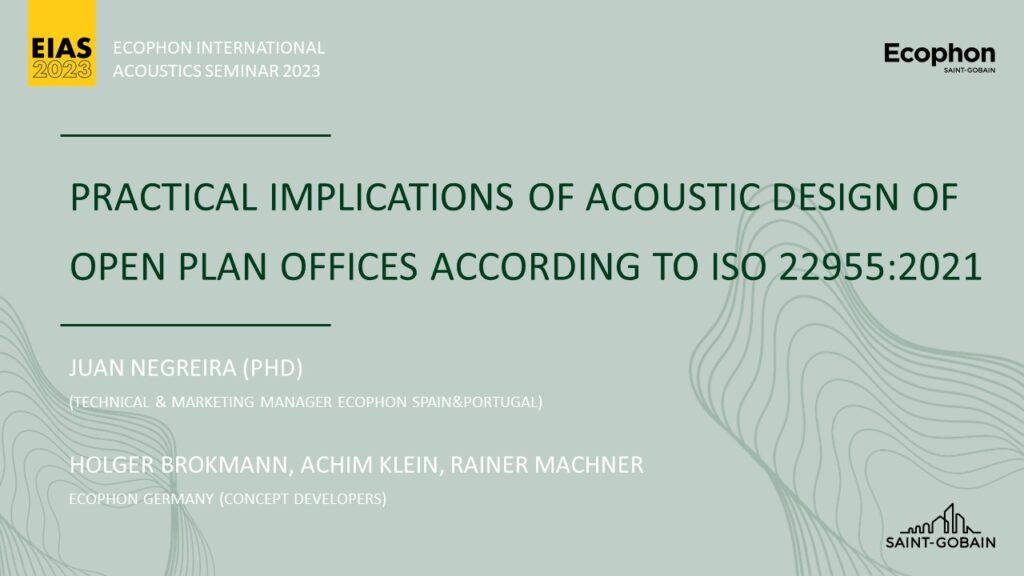
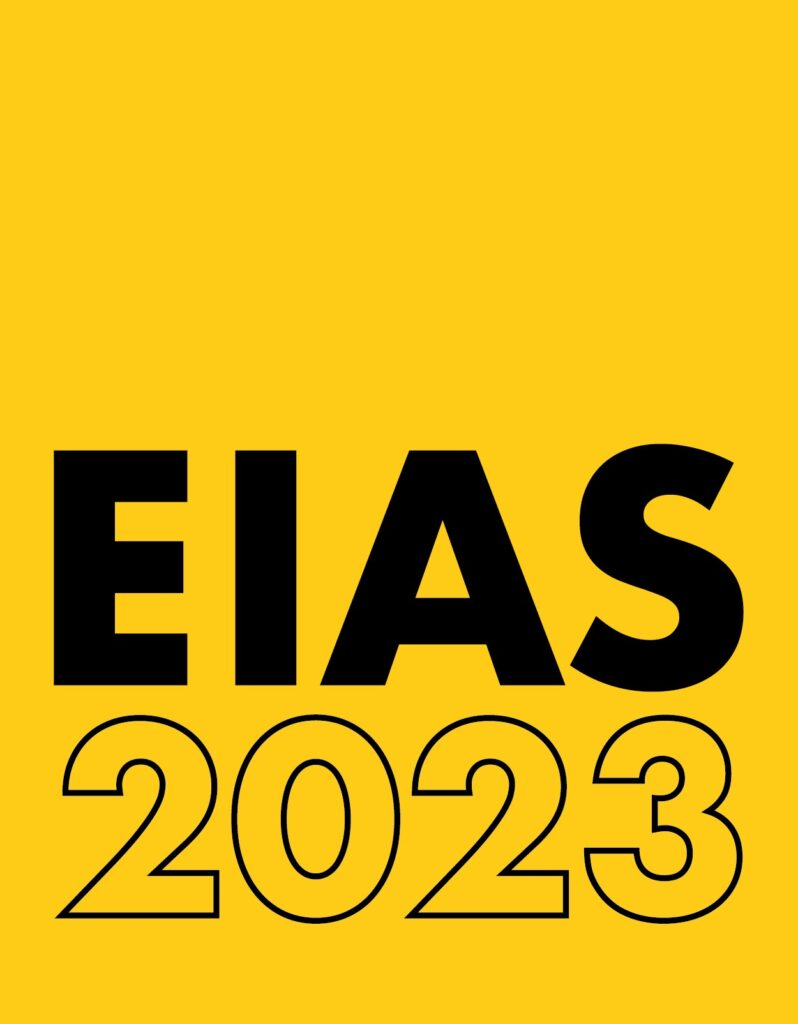
Here you can watch the full presentation >>>

